Medieval Highlights of Tallinn
Medieval Highlights

In Tallinn for a limited time? Want to make sure you’ve hit all the main sights? Here’s a list of places that you’ll definitely want to put on your itinerary.
We’ve included extended descriptions of each one to give you the necessary on-site background, and to help you narrow down the list even further if needed.

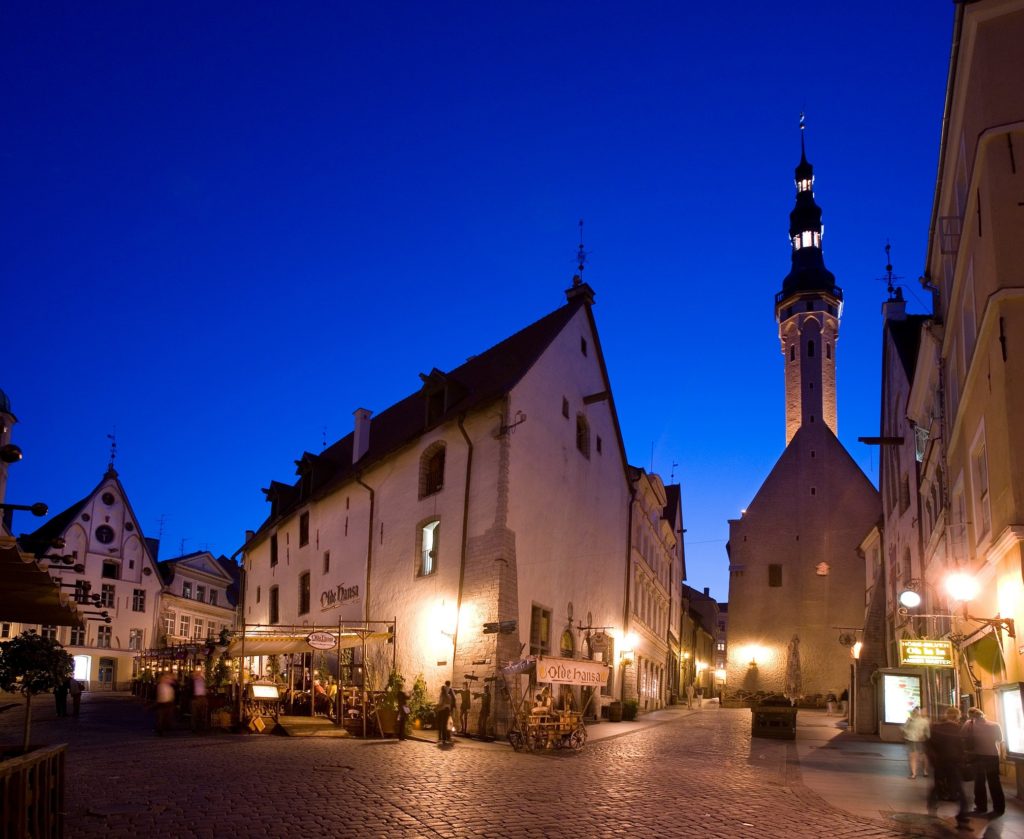
Olde Hansa - Medieval Restaurant
This unforgettable, Medieval-style restaurant is set up like the welcoming home of a 15th-century Hanseatic merchant. Here you can soothe your hunger with roasted game meat, raise your spirit with flavoured wines and enjoy the genuine Medieval atmosphere complete with colourful murals, period music, candlelight and caring service.
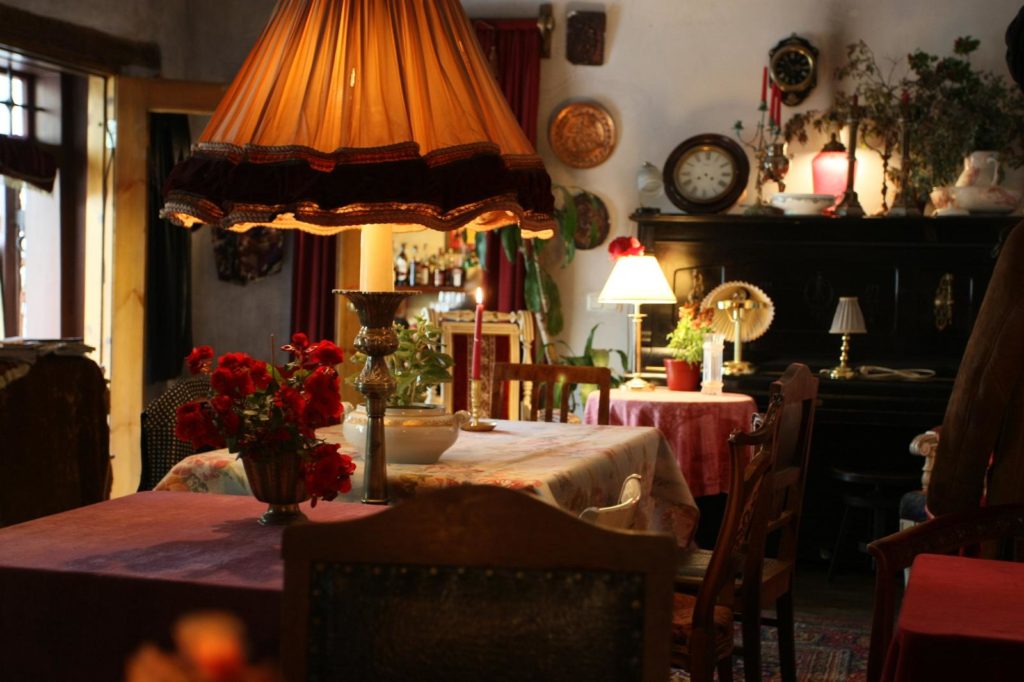
Masters' Courtyard
This quiet courtyard is home to the master craftsmen of the Old Town. Visitors can shop for handicrafts and jewellery, and sample heavenly confections created in the popular Chocolaterie Café. Comfortable accommodation is available in the courtyard’s guest apartments Villa Hortensia.
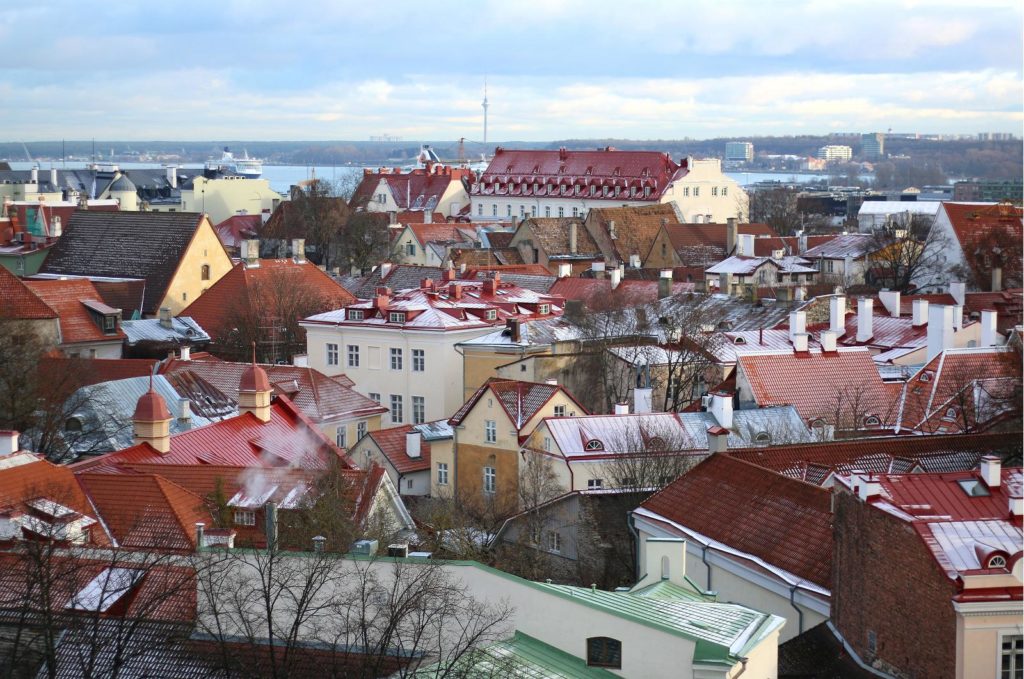
Kohtuotsa viewing platform
Kohtuotsa offers sweeping panoramas of Old Town’s rooftops and towers against the backdrop of the modern city skyline.
The spacious area on the east corner of Toompea hill offers unforgettable views of the medieval neighbourhood and is easily the city’s most famous photo spot. From here you can see most of Tallinn’s centuries-old spires as well as its newer ones, the highest of which is the TV Tower visible in the distance. Beyond the modern city centre lies the Lasnamäe suburb with its countless Soviet-style block apartment buildings.
During the summer season, an outdoor café operates here and dance evenings are held on the platform space.
With any luck, you will also find a seagull called Steven walking on the edge of the platform posing for photos like a true supermodel. Those seagulls must be some of the most pictured birds out there… #Tallinnseagull and #Steventheseagull
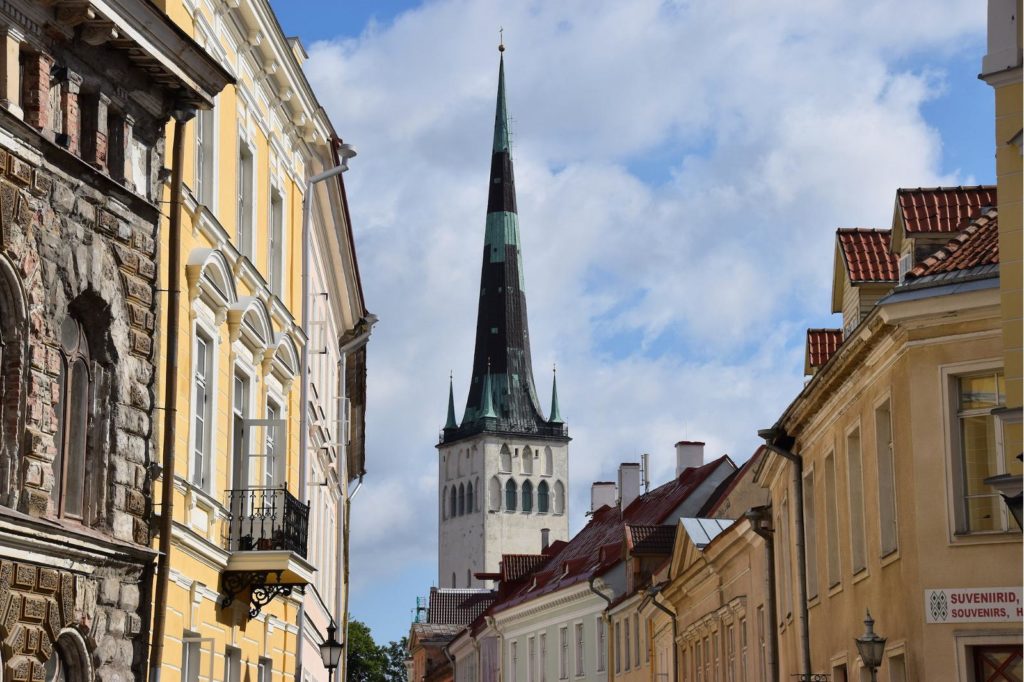
St. Olav’s Church and Tower
Make the vigorous climb to the top of Tallinn’s iconic, Gothic church, once the tallest building in the world.
Once upon a time, from 1549 to 1625 to be precise, this Gothic church was the tallest building in the World. But it’s gigantic, 159-metre spire, meant as a signpost for approaching ships, also turned out to be a very effective lightning rod. Throughout the church’s history lightning hit the spire repeatedly, completely burning down the structure three times.
Nowadays its smaller, 124-metre spire still dwarfs most of Tallinn’s buildings and remains an important symbol of the town. From April to October, visitors can make the vigorous climb to the top of the stone portion of the tower for magnificent and dizzying views of Old Town, Toompea hill and the port area.
The church itself dates back to at least 1267 when it is thought to have served a group of Scandinavian merchants who settled in the area. Various legends insist the church got its name from either the giant or the mysterious stranger who built it, however it was in fact dedicated to King Olaf II of Norway.
Its current shape and size were set in the 16th century. Inside are high, vaulted naves and a historicist interior design that dates to the time it was rebuilt after a fire in 1830.
Services on Sundays at 10am and 12pm.
Entrance to the church is free.
Entrance to the tower is free with Tallinn Card.
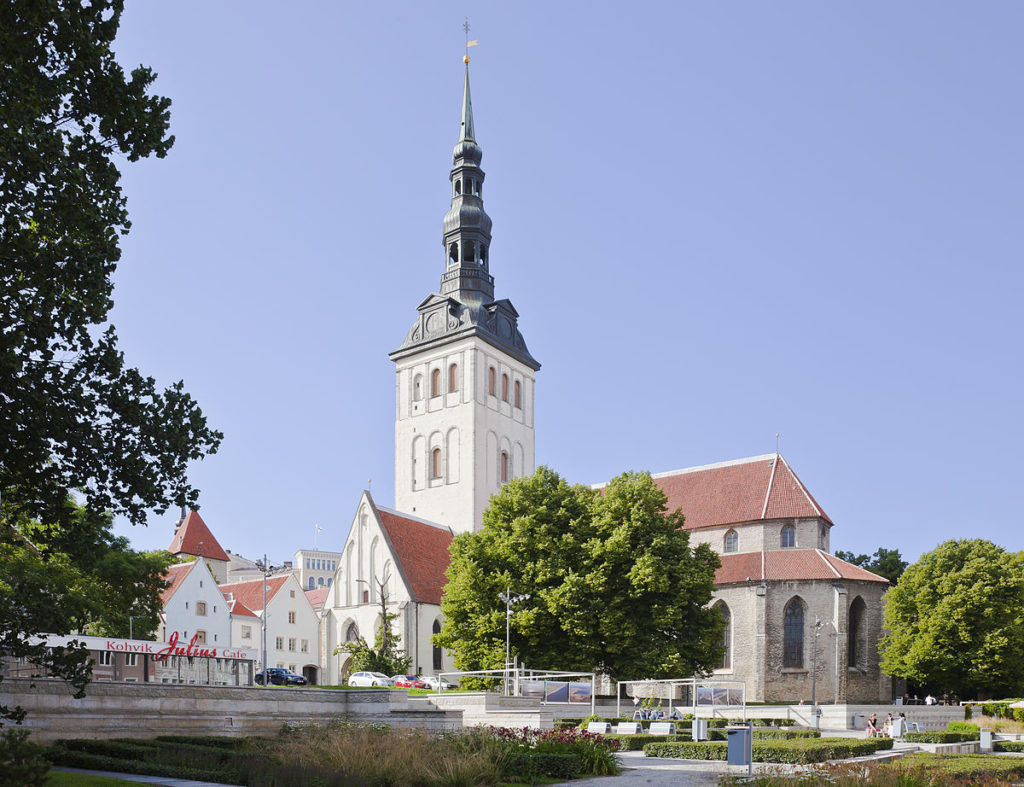
St. Nicholas' Church
Exquisite altarpieces, medieval burial slabs and other works of religious art can be seen in this 1230-era church-turned-museum.
Saints, dancing skeletons and silver – not to mention the occasional organ concert – are the main attractions here.
Founded by German merchant/settlers from the island of Gotland, the sturdy church was designed to double as a fortress in the days before the town wall was built. The building survived the Reformation looting of 1523, but wasn’t so lucky in the 20th century when it was destroyed by World War II bombs.
Since its restoration in the 1980s, St. Nicholas’ has functioned as a museum specialising in works of religious art, most famously Bernt Notke’s beautiful but spooky painting Danse Macabre (Dance with Death). Intricate altarpieces, baroque chandeliers and centuries-old burial slabs are also on display, while the Silver Chamber is home to stunning works by members of town’s craft guilds.
The building’s acoustics also make it a prime concert venue, with organ or choir performances held here most weekends.
Entrance is free with Tallinn Card.
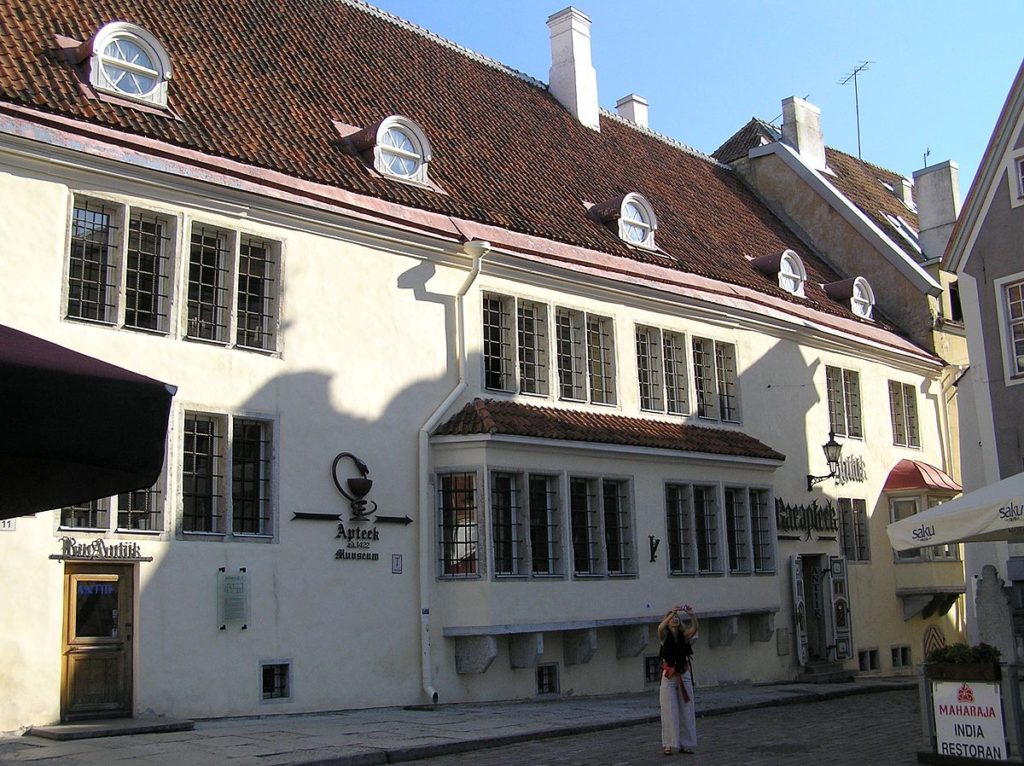
Town Hall Pharmacy
Open since 1422, this curious little shop on Town Hall Square is in fact the oldest continuously running pharmacy in Europe.
Ten generations of the same family, the Burcharts, operated it from1581 to 1911. It was so famous in its day that the Russian tsar used to order medicines from here.
Remedies sold at the pharmacy in medieval times included snakeskin potion, mummy juice and powdered unicorn horn (for male potency). But this was also a place to buy everyday items like jam, tea, claret, gunpowder and, most importantly, marzipan. Marzipan was one of the pharmacy’s best sellers, one that local legend insists was actually invented as a curative here in the 15th century.
The historic site still operates as a pharmacy today, selling modern products, but its side room houses an interesting display of 17th- to 20th-century medicinal bric-a-brac.
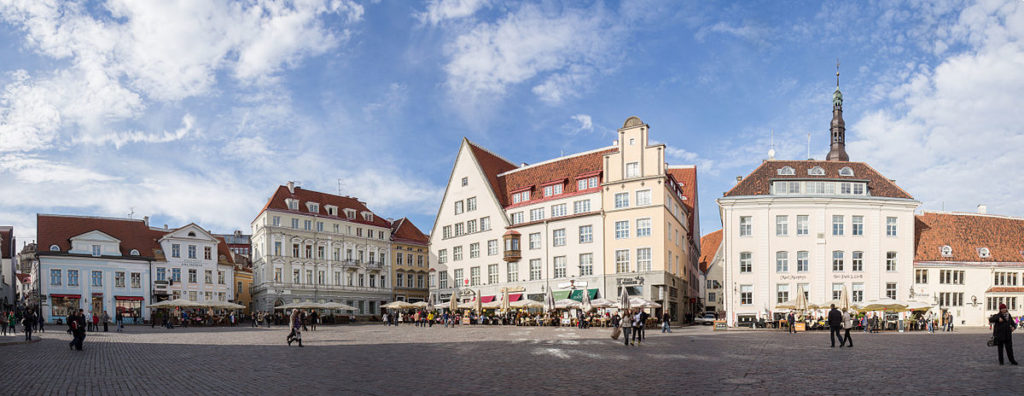
Town Hall Square
Picturesque Town Hall Square has been the undisputed hub of Old Town for the last eight centuries.
Surrounded by elaborate merchant houses and, in summer, packed with café tables, it’s a natural magnet for tourists.
Historically it served as a market and meeting place, and was the site of at least one execution (resulting from a dispute over a bad omelette). Find the round stone marked with a compass rose in the middle of the square. From this spot, with a little stretching and bending, you can see the tops all five of Old Town’s spires.
Today, the square remains the social heart of the city, a venue for open-air concerts, handicraft fairs and medieval markets. Each winter it’s home to the town’s Christmas tree – a tradition that stretches back to 1441 – and a buzzing Christmas Market. In spring it hosts the Old Town Days festival, a modern version of a medieval carnival, where traditions from the Middle Ages are kept alive.
Notable buildings around the square include the Town Hall and the Town Hall Pharmacy.
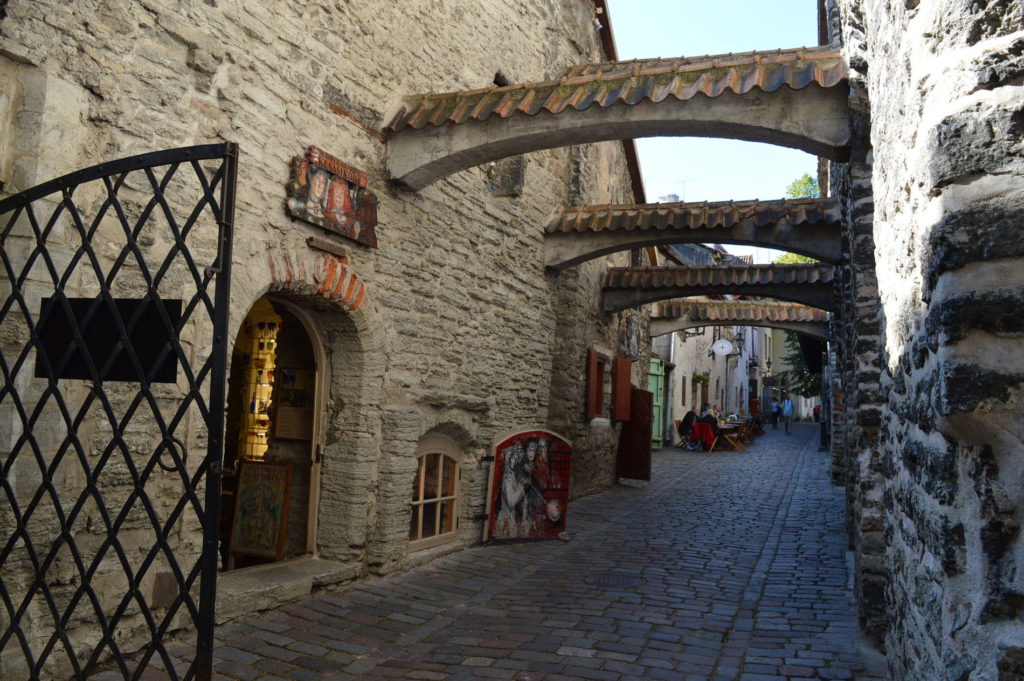
St. Catherine's Passage
Easily the most picturesque of Old Town’s lanes, this half-hidden walkway runs behind what used to be St. Catherine’s Church.
It connects Vene street with the Müürivahe street where the town’s famous knit market operates.
What makes the passage particularly interesting is that it’s home to the St. Catherine’s Guild, a collection of craft workshops where artists use traditional methods to create and sell glassware, hats, quilts, ceramics, jewellery, hand-painted silk and other wares. The workshops are housed in the small, 15th- to 17th-century rooms on the south side of the lane, and are set up in an open-studio fashion so visitors can watch the artists at work, be it glass-blowing, weaving or pottery making.
As absorbing as these displays can be, St. Catherine’s passage is more about ambience than anything else. No other place in Tallinn combines creativity with a medieval atmosphere quite like it.
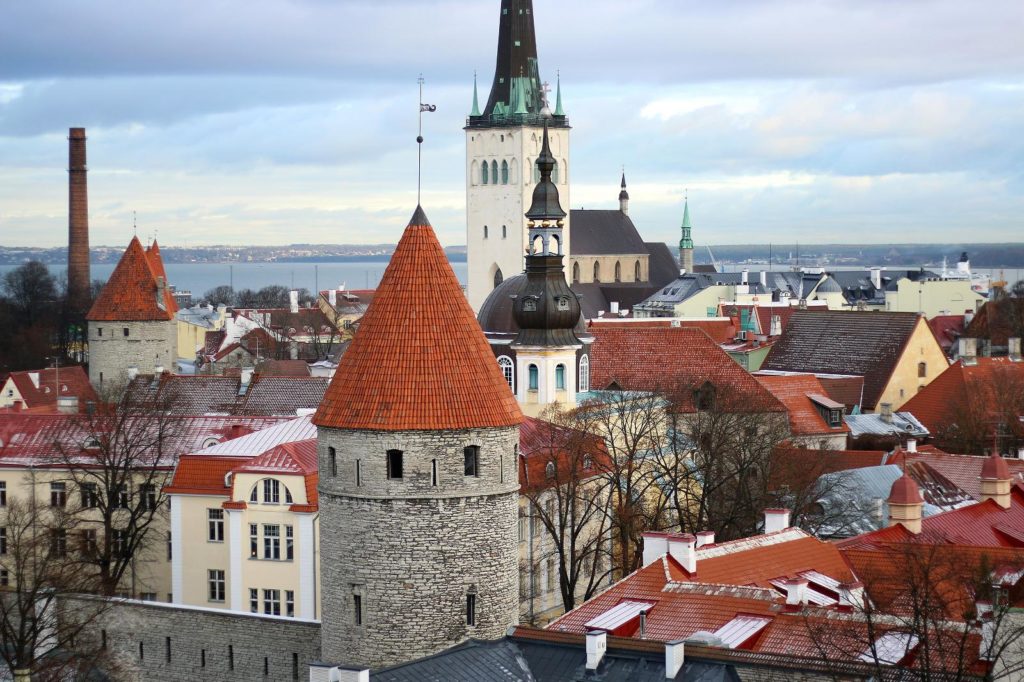
Patkuli viewing platform
This is the best vantage point for viewing Tallinn’s fairytale Town Wall and towers, St. Olav’s Church and the harbour area.
Located on the north side of Toompea hill, the platform sits visibly on a limestone cliff. On the right, the Town Wall and its defensive towers stretch off into the distance. On the left lie the city’s Kalamaja and Pelgulinn areas, with the railway station as a landmark.
A winding series of steps, built in 1903, leads down the cliff face to Nunne street and Shnelli Park below.
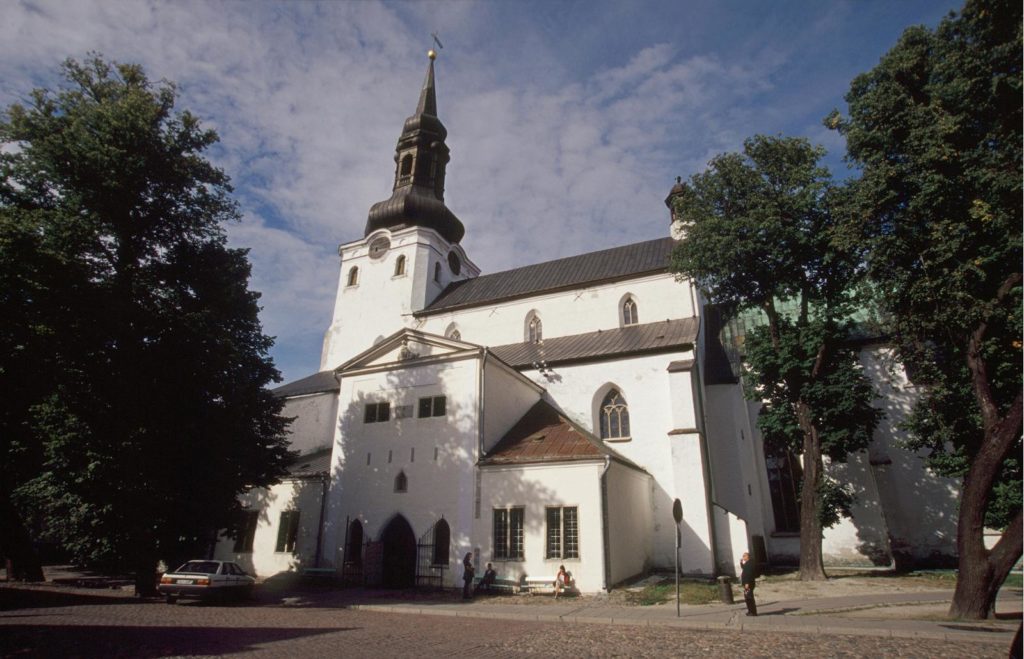
Cathedral of Saint Mary the Virgin (Dome Church's) Tower
Visitors can climb the 69 meter Baroque bell- tower of this famous, medieval church for amazing views of the city.
The church itself, known as Dome Church (Toomkirik), stands at the centre of Toompea hill and is one of the country’s most fascinating historic attractions. Founded in the 13th century, it was the church of Estonia’s elite German nobles.
Entrance to the tower is free with Tallinn Card.
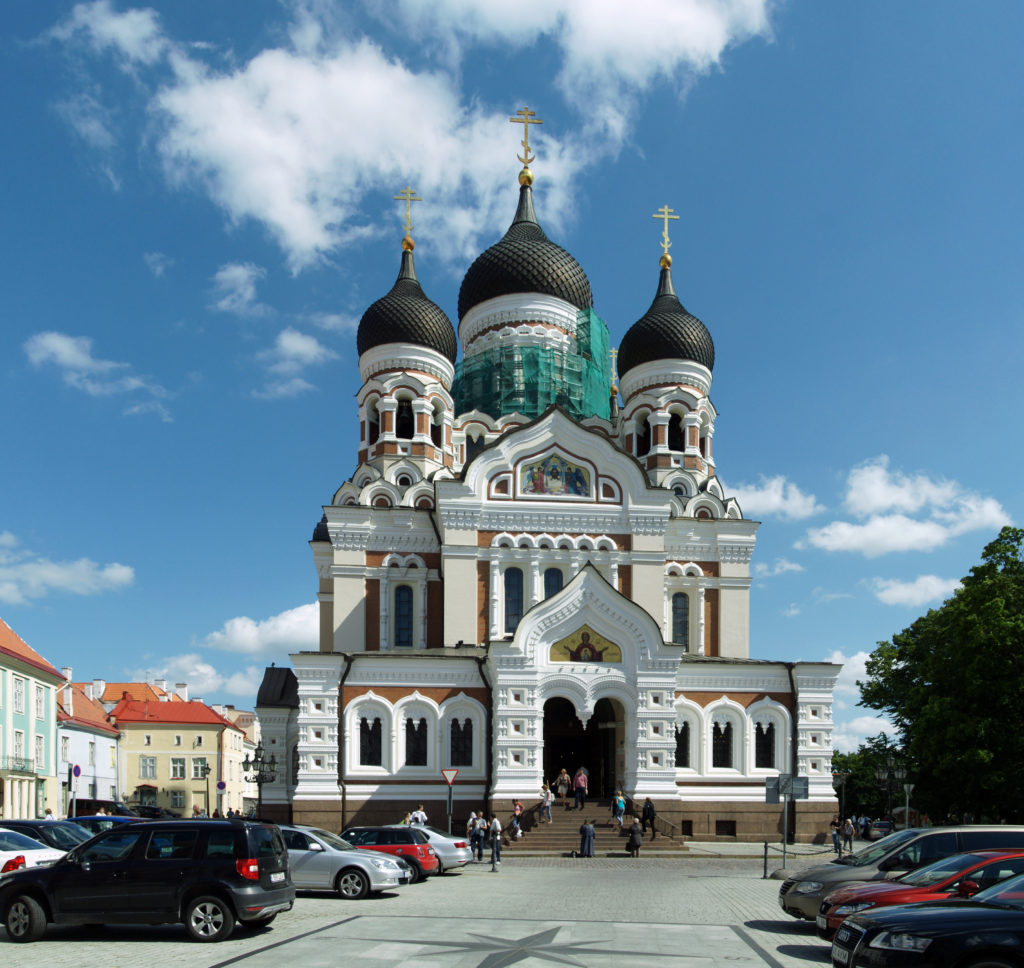
St. Alexander Nevsky Cathedral
This spectacular, onion-domed structure perched atop Toompea Hill is Estonia’s main Russian Orthodox cathedral.
It’s also by far the grandest, most opulent Orthodox church in Tallinn.
Built in 1900, when Estonia was part of the tsarist Russian empire, the cathedral was originally intended as a symbol of the empire’s dominance – both religious and political – over this increasingly unruly Baltic territory.
The cathedral was dedicated to the Prince of Novgorod, Alexander Yaroslavich Nevsky, who led the famous Battle of the Ice at Lake Peipsi in 1242, which halted the German crusaders’ eastward advance. It was deliberately placed in this prominent location right in front of Toompea Castle, on the same spot where a statue of Martin Luther had previously stood, to show the mainly Lutheran locals who was in charge.
Now with the controversy long since faded, what’s left is simply an architectural masterpiece. Designed by respected St. Petersburg architect Mikhail Preobrazhenski, the church is richly decorated in a mixed historicist style. The interior, filled with mosaics and icons, is well worth a visit.
The church’s towers’ hold Tallinn’s most powerful church bell ensemble, consisting of 11 bells, including the largest in Tallinn, weighing 15 tonnes. You can hear the entire ensemble playing before each service.
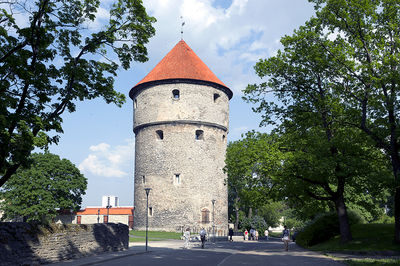
Kiek in de Kök
This massive, 38m-high cannon tower houses an extensive museum of the town’s fortifications, weapons and medieval-era life.
Anyone interested in walls, towers, cannons and the like should drop into the tower-turned-museum. In addition to examples of medieval firepower, there are displays detailing how the city’s system of walls and towers developed through the centuries as well as exhibits covering crime and punishment and other facets of life in the Tallinn of old.
Kiek in de Kök is also the starting place for visitors interested in the fascinating system of hidden tunnels (Bastion Passages) that run underneath the old bastions of Toompea hill.
The tower’s unusual name literally means “Peek into the Kitchen.” The structure was so high that medieval guards joked they could see right down the chimneys and into the kitchens of the houses below.
Kiek in de Kök was originally built in the 1470s, but quickly expanded and strengthened with walls that are four metres thick. During the Livonian war in the late 1500s, Ivan the Terrible’s forces managed to blow a huge hole through the top storey, but the tower held. During post-war repairs, a row of four cannon balls was placed in the newly patched stone wall as a memorial. You can still see them on the tower’s south east side.
While at the museum, be sure to pay a visit to the top floor café where you can get some beautiful Old Town views.
Entrance to Kiek in de Kök and Bastion Passages with Tallinn Card is free.
